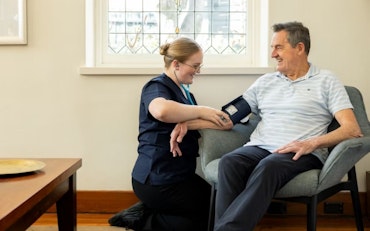Stretched thin: how Australia’s sandwich generation is paying the hidden cost of care
Imagine helping your toddler learn to walk while helping your mum learn to walk again after a fall. For nearly 1.5 million Australians, this is daily life. They’re the ‘sandwich generation’ — middle-aged people balancing the needs of young kids and ageing parents, often on the same day and often while trying to keep a career afloat.
![<p>Have you tried raising a family while taking care of the family that raised you at the same time? You might be a part of the ‘sandwich generation.’ [Source: PIKSEL via iStock]</p>](https://agedcareguide-assets.imgix.net/news/articles/wp/PIKSEL__0107.jpg?fm=pjpg&format=auto&w=550&q=65)
Have you tried raising a family while taking care of the family that raised you at the same time? You might be a part of the ‘sandwich generation.’ [Source: PIKSEL via iStock]
The struggle has been brought into sharper focus by the ABC’s new series The Care Squeeze, which exposes how much unpaid care goes unnoticed in our society — and how little support these family carers get in return.
The glue holding it all together — unpaid and unseen
The so-called ‘care squeeze’ is no small squeeze — it’s an emotional, physical and financial burden that’s only growing as more Australians live longer and start families later. The ABC’s investigation highlights the ripple effect: annual leave spent driving parents to medical appointments, carers missing promotions or cutting work hours and family savings draining away on private help when public systems fail.
Many of these carers are women — mothers, daughters and partners doing the lion’s share, often out of love but at the expense of their own well-being and financial security. You may wonder what the hidden reality is behind the scenes of this rock-and-a-hard-place scenario. They’re propping up an overstretched care system that relies on them to fill the cracks.
A silent crisis with real costs
This double duty doesn’t just affect family life — it hits household incomes, job opportunities and future retirement savings. Treasury has crunched the numbers: if unpaid carers could stay in the workforce with better supports, the economy would gain billions. Yet, practical solutions, like affordable respite care or flexible work arrangements, are still patchy and hard to access.
It’s time to rethink who cares for the carers
Childcare costs remain sky-high, aged care packages come with long waiting lists and residential care can be financially and emotionally daunting. Australia’s systems just weren’t built for families juggling kids and elderly parents at the same time.
The message is clear: we need to stop treating carers as an afterthought. Paid carer’s leave, better respite and flexible work should be the norm, not the exception.
Love is endless — but time isn’t
At the end of the day, this is about more than dollars and policy. It’s about how we value family life, ageing and the unpaid work that keeps people safe and connected. If we want to truly care for our loved ones, we must also look after those who do the caring.
Until that happens, millions of Australians will continue to carry this invisible burden, because while love never runs out, the time and energy to manage everything does.
Are you a part of Australia’s sandwich generation and how has it impacted your quality of life or mental health? Let the team at Talking Aged Care know and subscribe to the newsletter for more information, news and industry updates.
Related content:
Have your say: in-home aged care pricing under review
Differences between respite at home and nursing home respite










